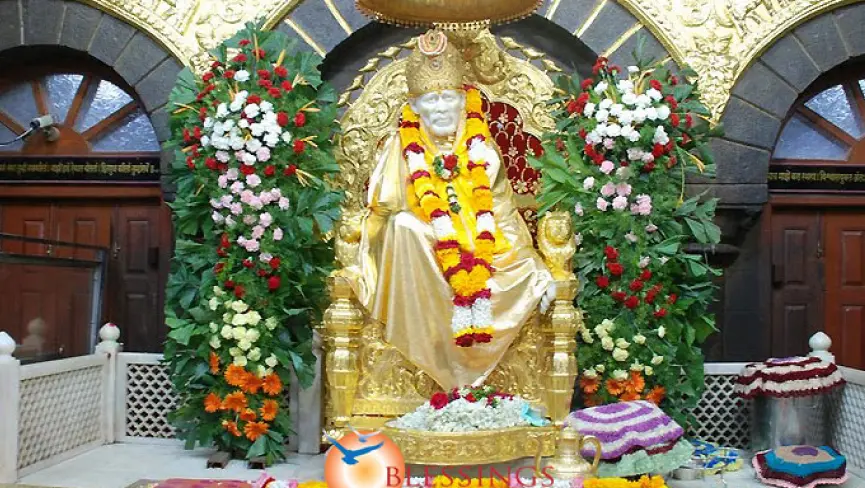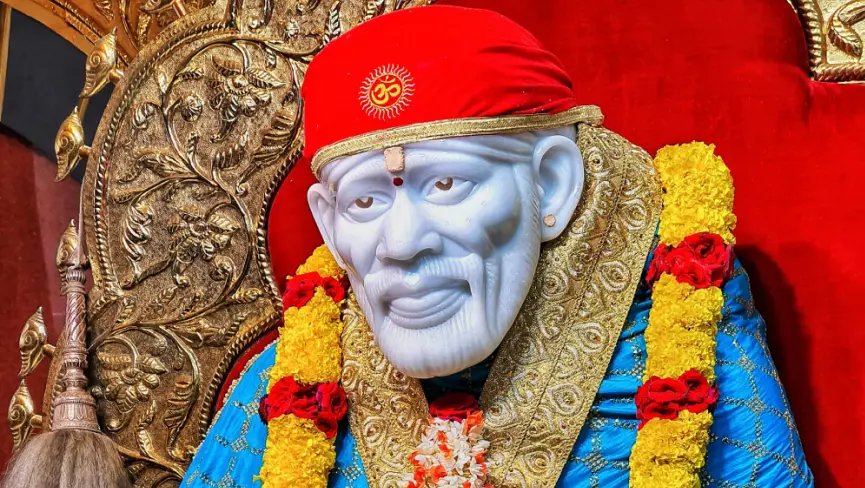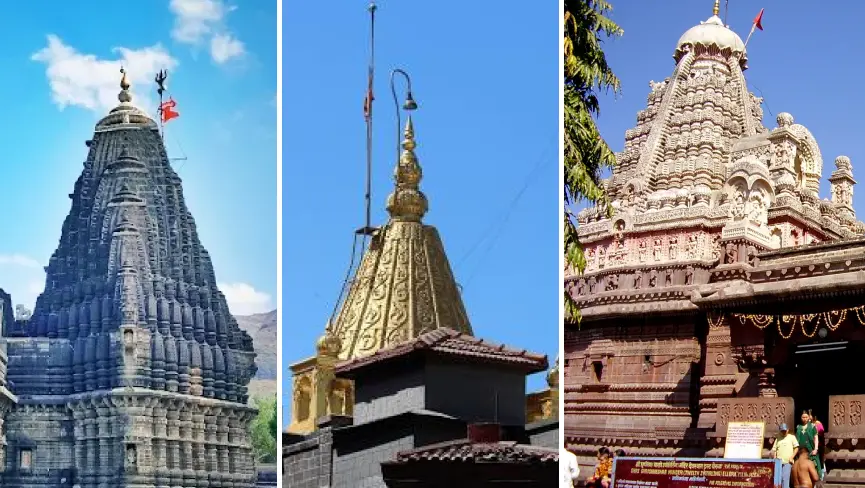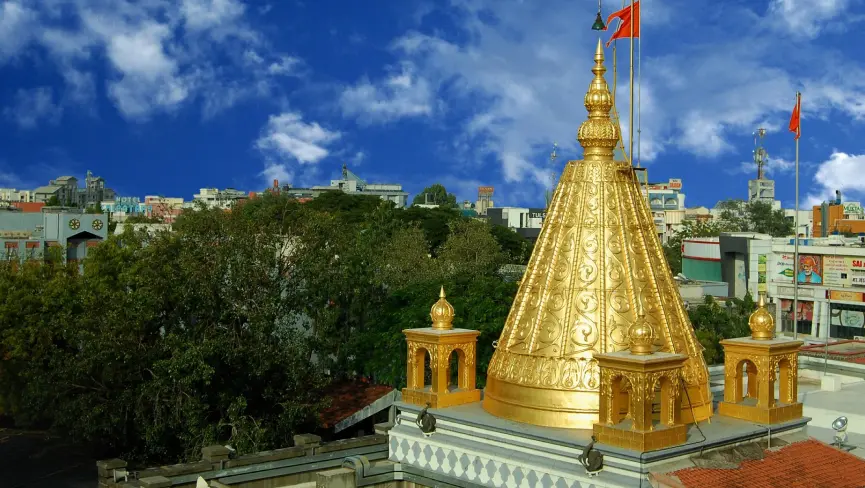
Spiritual Significance of Shirdi – Why Millions of Devotees Visit Every Year
Shirdi, a small town in Maharashtra, is one of the most sacred pilgrimage destinations in India. Known worldwide as the abode of Sai Baba of Shirdi, this holy land attracts millions of devotees each year who seek blessings, peace, and spiritual guidance. The significance of Shirdi is not just about visiting a temple—it is about experiencing divinity, miracles, and the eternal presence of Sai Baba that continues to inspire faith and devotion across the globe.
Sai Baba’s Teachings and Universal Message
Sai Baba of Shirdi is revered not just as a spiritual master, but as a guide whose teachings transcend religion, caste, and culture. His life was a living example of faith, compassion, and selfless service, and his messages continue to inspire millions worldwide.
1. Faith and Patience (Shraddha & Saburi)
Sai Baba often emphasized the importance of faith in God (Shraddha) and patience (Saburi). He believed that devotion combined with patience leads to inner peace and fulfillment. Devotees are encouraged to trust in divine timing and maintain perseverance during life’s challenges.
2. Unity of All Religions
One of Sai Baba’s most powerful messages was the oneness of all faiths. He taught that God is the same, whether one calls Him Allah, Rama, Krishna, or any other name. His mosque and temple practices reflected this unity, making Shirdi a place where people of all religions feel welcome.
3. Selfless Service (Seva)
Sai Baba encouraged helping others without expecting anything in return. He often said that serving humanity is serving God, and this principle is at the core of many charitable activities in Shirdi, including feeding the poor and caring for the sick.
4. Compassion and Forgiveness
Compassion for all beings and forgiveness of others’ faults were central to Sai Baba’s teachings. He urged devotees to let go of anger, hatred, and ego, promoting harmony and love among people.
5. Detachment and Spiritual Focus
While Sai Baba lived a simple life, he taught that true happiness comes from detachment from material desires and focusing on spiritual growth. Devotees are guided to seek God within, rather than in worldly possessions.
Other Sacred Spots in Shirdi
Apart from the famous Sai Baba Samadhi Mandir, Shirdi is home to several other sacred locations that hold deep spiritual significance. Devotees visiting Shirdi often explore these spots to experience the complete spiritual journey and connect with the life and teachings of Sai Baba.
1. Dwarkamai
Dwarkamai is the mosque where Sai Baba spent a significant part of his life. It is considered the heart of Shirdi’s spiritual legacy. Baba lived here for over 60 years, meditating, performing miracles, and guiding devotees. Today, Dwarkamai houses a sacred Dhuni (eternal flame) that has been burning continuously since Sai Baba’s time, believed to purify the mind and soul.
2. Chavadi
Chavadi is another historically significant site where Sai Baba used to rest on alternate nights. During festivals, devotees witness a unique Chavadi procession, where Baba’s idol is carried from the Samadhi Mandir to Chavadi, symbolizing his spiritual presence and routine.
3. Gurusthan
Gurusthan is the sacred tree where Sai Baba was first spotted meditating as a young boy. It is believed that Baba performed several miracles here, blessing early devotees and teaching the importance of faith and devotion. Pilgrims often offer prayers here to seek guidance and spiritual blessings.
4. Khandoba Temple
Located close to Shirdi’s main temple complex, Khandoba Temple is another revered site visited by devotees. Although smaller in scale, it holds spiritual significance, and many pilgrims include it in their Shirdi tour.
5. Shri Sai Museum
The Shri Sai Baba Museum preserves Baba’s personal belongings, including clothes, sacred objects, and photographs. Visiting this museum gives devotees a tangible connection to Sai Baba’s life and teachings, enhancing their spiritual experience in Shirdi.
6. Lendi Baug
Lendi Baug is a beautiful garden where Sai Baba used to water plants and meditate. It represents Baba’s love for nature and simplicity. Pilgrims often find a sense of calm and serenity here, making it an ideal spot for reflection and meditation.
Related Blog

Complete Shirdi Pilgrimage Guide – Darshan Timings, Temple History & Travel Tips

Shani Shingnapur Temple Travel Guide – History, Darshan Timings & Unique Traditions

Sai Baba Life & Miracles – Stories You Must Know Before Visiting Shirdi

Shirdi to Trimbakeshwar and Grishneshwar Jyotirlinga Tour Plan – A Complete Guide

Spiritual Significance of Shirdi – Why Millions of Devotees Visit Every Year

Sai Baba’s Universal Message of Faith and Patience – Sabka Malik Ek

How to Reach Shirdi from Mumbai, Pune, Hyderabad & Other Cities – Complete Travel Guide

Sai Baba Prasadalaya & Annadanam Details in Shirdi | Free Meals for Devotees

